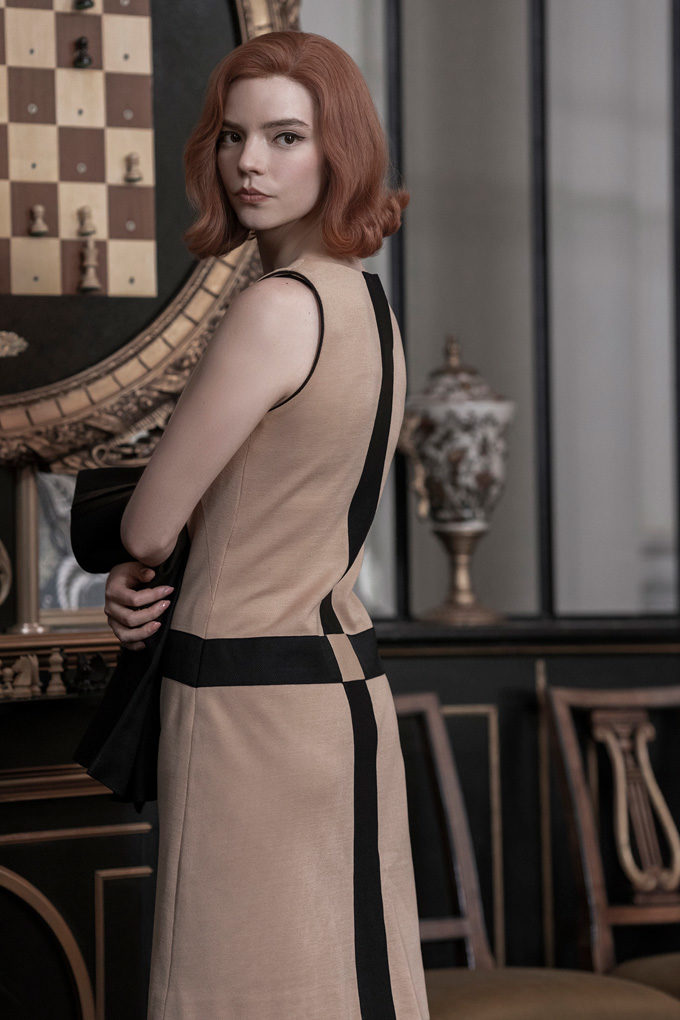Feeling ennui after Emily in Paris? Director Scott Frank’s elegantly plotted Netflix series, The Queen’s Gambit, is the whip-smart screen-style fix we needed this autumn (and I promise there isn’t a patent ankle boot in sight).
The glossy small-screen epic, which stars 24-year-old Anya Taylor-Joy as American chess prodigy Beth Harmon (a character original to Walter Tevis’s suspenseful 1983 novel of the same name) deep dives into identity, obsession, addiction and feminism against the backdrop of the 1960s counterculture revolution. Taylor-Joy’s formidable performance—this is a series you will want to consume in one sitting if you haven’t already—is matched by a custom-made wardrobe, masterminded by Berlin-based costume designer Gabriele Binder, which holds myriad hidden messages.
“My role is always to connect back to the story through the clothes and the initial brief is, of course, the script,” Binder tells Vogue over the phone from her home in the German capital. “I immediately fell in love with it as it was so full of inspiration.”
For the costume designer, whose credits also include Angelina Jolie’s In the Land of Blood and Honey (2011) and the Oscar-nominated Never Look Away (2018), the chess world itself provided her starting cue—“to find out what [traits] are unique to chess players and what makes them interesting people.” From there, Binder began excavating the past, creating clothes that have the power to signal the seismic influence of the decade’s leading fashion designers, such as André Courrèges, and offbeat female talents (including Jean Seberg and Edie Sedgwick), which Taylor-Joy seamlessly inhabits.
“She is magical,” Binder says of the star. “If she really likes [a piece] and thinks it is the right thing for the right moment, she makes the smallest thing big. She immediately connects to the clothes on her body.”
From the bespoke ‘beat generation’ T-shirts to Beth Harmon’s signature check, and the slew of decisively chic dresses she wears as she demolishes her male opponents, here Gabriele Binder decodes the hidden messages behind Anya Taylor-Joy’s best looks in The Queen’s Gambit.

1 / 9
Beth Harmon’s first fashion connection
“We wanted Beth Harmon’s late 1950s, early 1960s look to be a little bit backwards on purpose—that way we could clearly show the moment when she catches up with the modern day in New York where she discovers how young people in her generation are living. When Beth is at school, she feels that the other girls are so different from how she is, to the extent that she doesn’t feel she can belong to this group. It’s at this moment that she is searching everywhere for something [and someone] to connect to and, in the absence of a real person, she connects to the dress on the mannequin.”
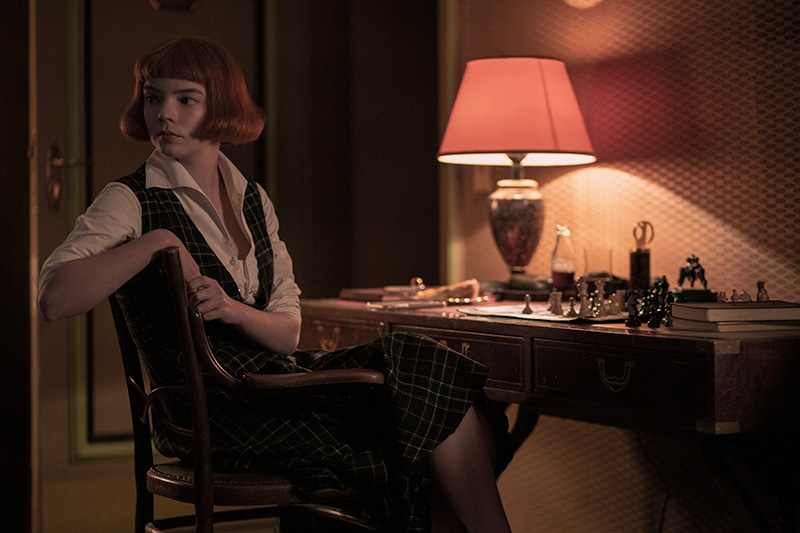
2 / 9
The significance of checks
“I always try to mirror what is happening inside a character with what they are wearing on the outside and the checks are something that I thought would be immediately interesting to Anya’s character, as she would intuitively choose to wear pieces that are connected to chess. The contrast of the check print also mirrors the nuances of the game itself—it’s decisive, it’s win or lose—which you would not have with, say, a floral print.”

3 / 9
The muses of the era
“For the looks that referenced the style of the 1950s, I thought of Jean Seberg—like Beth Harmon, she was an outsider. For the New York looks, I had Edie Sedgwick in mind. Later in the series, I incorporated references to the rise of Biba style through the eyes of someone who is an outsider—an interesting person who is going her own way.”
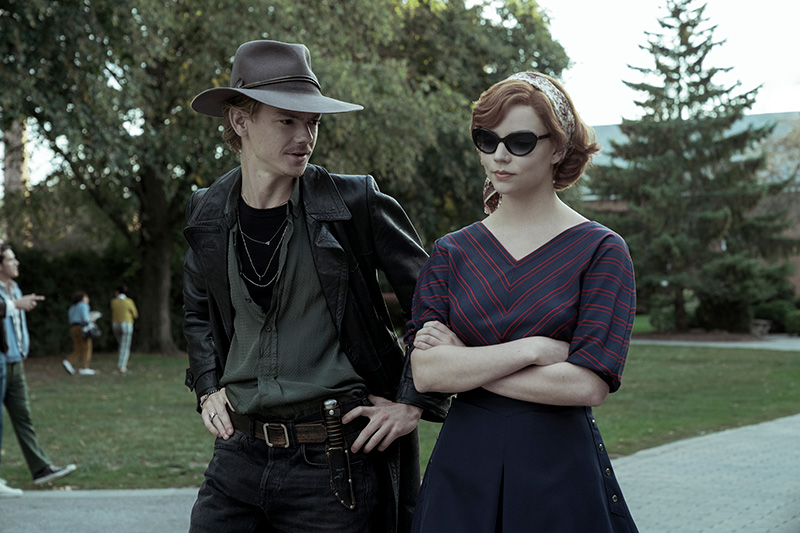
4 / 9
The 1960s counterculture influence
“I imagined Benny Watts [played by Thomas Brodie-Sangster] could be connected to Andy Warhol’s Factory, and part of the era’s art and music scenes. He’s so different from everybody else; he is not the ‘chess geek’ like the other guys—as with Beth, he is an outsider. I thought they made a really great couple.”

5 / 9
The revolutionary freedom of the casual T-shirt
“I especially love the T-shirts Beth wears towards the end of the series, which we had made in green, blue, and white. They hint to the Courrèges silhouette—very cool, elegant and simple. I loved this look so much that I repeated it again and again, paired with simple slacks. Beth also wears the T-shirts with the block-patterned yellow cardigan—a look that feels so free and young. It’s definitely something that you can recreate today.”

6 / 9
The Pierre Cardin homage in Paris
“The dress Beth wears for the Paris tournament was a personal favourite of mine. It’s almost like a [Pierre] Cardin dress and has a kind of elegance that doesn’t even exist anymore.”
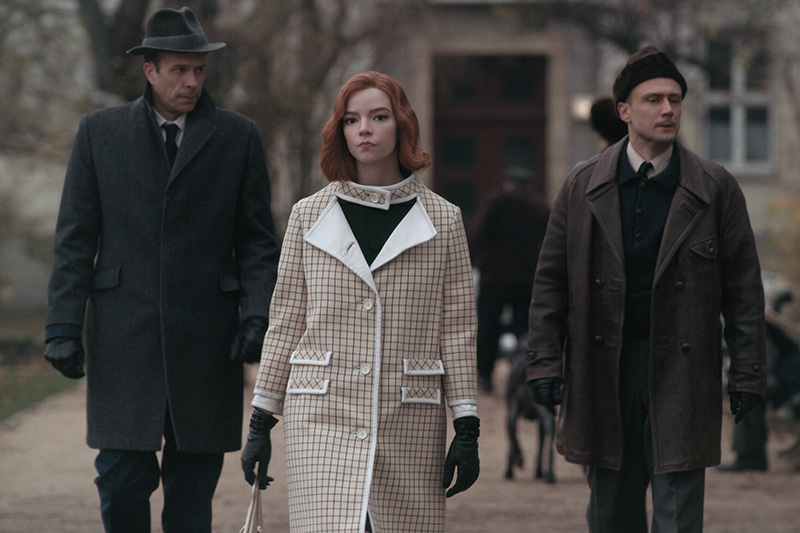
7 / 9
The path to victory in Moscow
“The checked coat that she wears to leave the tournament in Moscow was a beautiful vintage piece that we found, which I believe was designed by André Courrèges for an American designer as part of a collaboration. This was a very self-confident piece, we wanted the visuals of a strong decision referenced by the checks.”

8 / 9
Dressing a homecoming
“In episode one, Beth is wearing a dress that her mother made for her, tenderly embroidered with her name. The colour of this dress represents Beth’s sense of ‘home’. We wanted to create a moment when she could once again come ‘home’, which is why she is wearing the same colour dress in her final tournament in Moscow—the dress she is wearing when she is winning. We wanted to use this colour to show that she finally feels confident and that her mother is with her. At this moment, she is not afraid of the man she has been most afraid of. In the beginning, it’s a colour that makes her really fragile, but in the end, the same colour is a sign of her strength; it is symbolic of a homecoming.”
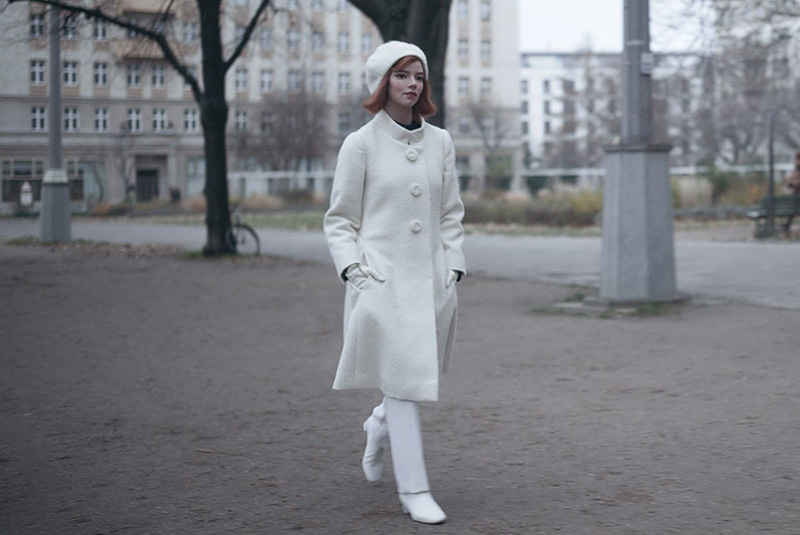
9 / 9
Queen of the chessboard
“At the end, Beth wears the white coat with the white pants and cap. The idea, of course, is to convey that she is now the queen on the chessboard and the chessboard itself is the world.”

